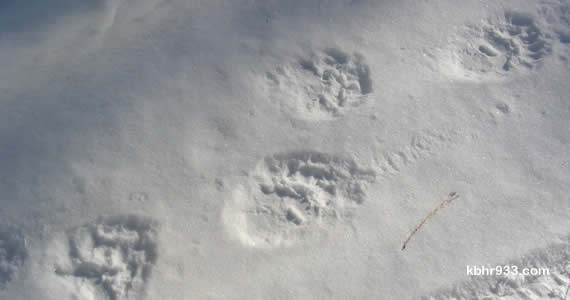

In recent weeks, many Big Bear residents have told us of bear sightings in their yards and on their porches; there is also an unconfirmed report of an accident on the back route of Highway 18 Sunday morning, involving a bear and a semi-truck. Local biologist Jeff Villepique with the California Department of Fish and Game tells KBHR that though they come in varying colors, including brown, these are American black bears in the Big Bear Valley—and not all of them have made the transition to “denning” or hibernating for the winter season. As he explains, “We do have some bears that will remain active—in other words, not go into a den—if there’s a food source. That’s the trigger.” Villepique notes that bears are drawn to food, especially when other food sources are covered in snow, so residents can take some easy preliminary measures to mitigate bear visits. In his words, “Probably the most important thing that residents can do regarding trashcans is keep them indoors and contained until the morning of trash pickup. Dog food on the porch is a real draw for bears because they can smell it up to a half-mile away. If a bear runs out of a natural food source, it will go looking around for the next food source, whether that’s a 40-pound bag of dog food on the back porch, or bird seed or Christmas leftovers in the trashcan.” If you don’t have a shed or garage for trashcan storage, it is recommended that smellier leftovers, like fish, be wrapped and stored in the freezer until trash day. And, should a bear approach you or near your home, Villepique says, “Don’t approach the bear. You want to turn on the lights, make some noise, and try to scare the bear off. We want the bear to have a bad experience, and think that it is not OK to be in your yard—that means no throwing hot dogs to the bear, or trying to lure the bear in for a picture!”



